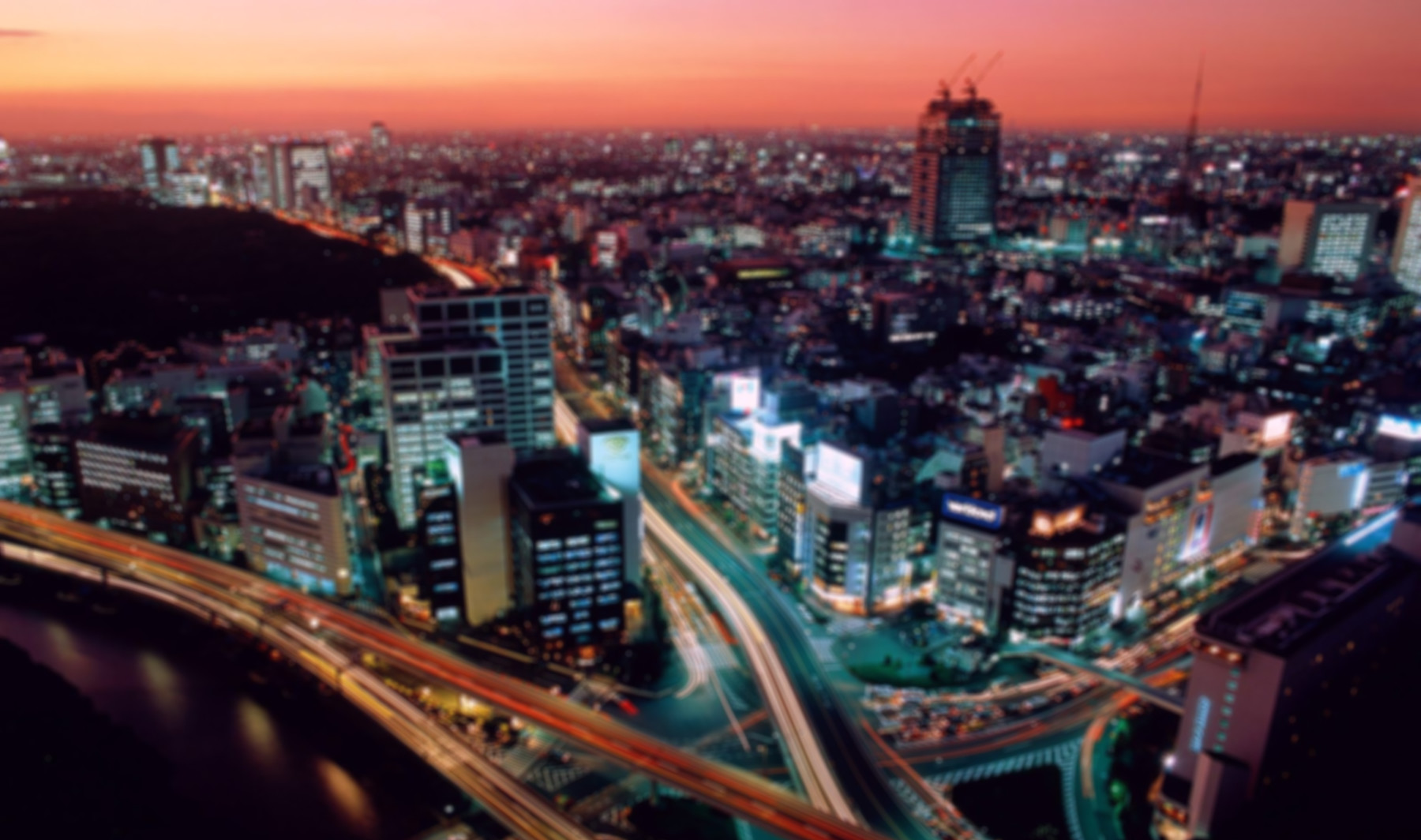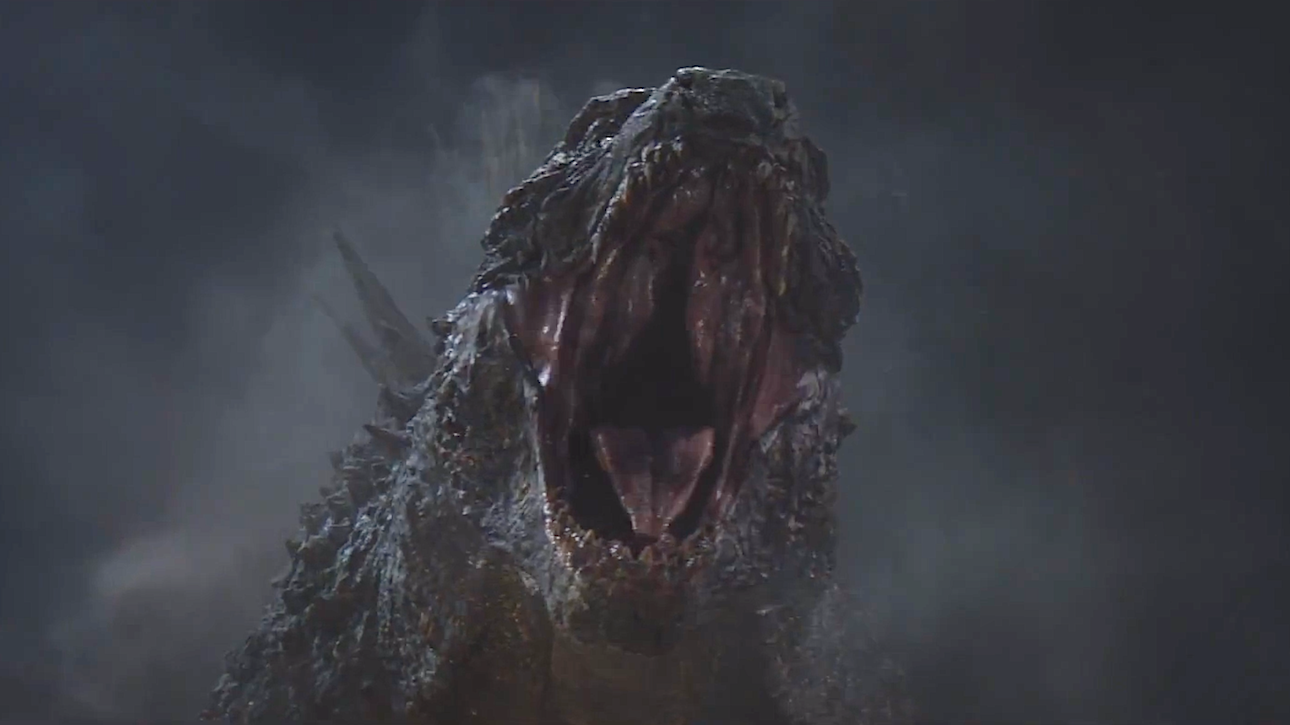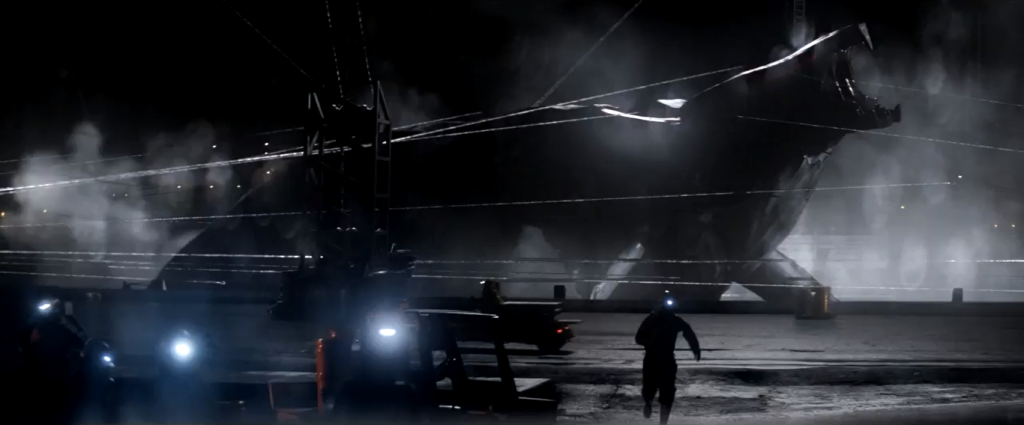If you’re reading this review to see if the latest version of Godzilla is worth going to theaters this weekend, my short answer is yes, but with a caveat: If you go see this movie, don’t be a cheap bastard…see it in IMAX 3D.
I’m not a huge proponent of 3D as a whole, largely because I feel it’s overused, but the sound and fury attached to GODZILLA is such that seeing it on the largest possible format is the way to go.
Sadly, even with that brief endorsement, my feelings about the film as a whole are a bit more complicated.
Now to the rest of the review. Usually, I would stray from going too deep into the plot, but some things have to be said. While I won’t spoil every surprise, needless to say, from here on out, there be spoilers.
Did you hear me? SPOILERS.
If you haven’t seen the movie, and are still reading this, then…aw, screw it, let’s talk about GODZILLA.
My last experience with the titular King of the Monsters came, much like it did for most Americans, in the form of the 1998 Tri-Star/Sony version. While it made goo gobs of money, it was, on the whole, an awful film that had more in common with Jurassic Park than the Japanese film legend. What it did have, however, was an extremely effective marketing campaign, with a number of trailers that alluded to the size and power of Godzilla, without actually showing the creature completely. The trailers either gave you an eye or a foot, along with the iconic roar, but that was it. As a way to hook viewers, that was pretty impressive for the time.
The problem with that bore itself out for audiences when they were greeted in the film not by the Godzilla they knew, but rather a giant iguana with spikes on its back that simply called itself Godzilla. I remember spending the first part of the movie hoping that maybe there would be a different mutation, changing the monster into something more like the beast I was used to seeing.
By contrast, likely due to the reaction of the 1998 version, Legendary Pictures’ version of Godzilla was face front almost immediately in the marketing process. Trailers, TV spots and posters all made sure to give viewers a good look at the latest incarnation of the green beastie, in an effort to put viewers at ease, letting them know that this time, this was the Godzilla you knew, with minor updates. (This version DOES look good, even if some Japanese think he could stand to lose a pound or two).
Unfortunately, while the 2014 version is far and away superior to the 1998 version, there are some similarities, especially when it comes to what I feel is slightly deceptive marketing.
After seeing GODZILLA last night, I came away with an uneasy feeling that this wasn’t the film I was sold by marketing. That just feels funny for me to even say, to be honest. Although I liked much of what I saw, even giving out the rare cheer at the appropriate spot. That said, what I was expecting was a bleak tale of monster rampage and survival. What I got…well…
Director Gareth Edwards (Monsters) is absolutely trying to create something both epic and memorable, as the film begins with videos of the 1954 Castle Bravo nuclear tests as well as videos of a large object moving through the water. It is heavily implied here (and confirmed later in the film) that the tests were not tests, but rather the military’s attempt to kill Godzilla.
Next, we fast forward to 1999, where mysterious scientists Serizawa and Graham (a morose Ken Watanabe and an almost not there Sally Hawkins) giant skeleton unearthed in the Philippines, who Serizawa immediately lets everyone know it’s not Godzilla. They find two chrysalis-shaped pods attached to the skeleton, one intact and one opened. Behind the opened pod, a trail of destruction leads from the mine to the sea.
In Janjira, Japan, we’re introduced to Joe Brody (Bryan Cranston in full aggrieved mode), a nuclear plant supervisor. Not even noticing that it is his birthday, he and his wife Sandra (a completely wasted Juliette Binoche) head to the plant they both work in answer to some seismic activity which could result in trouble (naturally). At the plant, Sandra proceeds to fall victim to an explosion within the core, and as is the case in films like this, the plot requires her to be unable to escape in time, forcing Joe to seal her and her team inside the reactor. Sandra does show up in time to give a final look to her husband as she begins to die from immediate radiation poisoning.
Happy birthday, Joe.
Sadly, Joe doesn’t have much time to grieve for his wife, as the plant continues to explode, forcing everyone to evacuate the island the plant is located on.
Up to this point, Director Edwards gives a powerful setup without actually showing any creature mayhem. He established what I thought would be the perfect slow burn, unfortunately, he continues to drag this slow burn through 2/3rds of the movie, which was a bit much.
In the present day, we’re introduced to Joe’s now adult son, Ford (Aaron Taylor-Johnson), who just returned home from a tour of duty as an explosive ordinance disposal technician in the United States Navy. We’re also introduced to his wife Elle (Elizabeth Olsen, who is given pretty much nothing to do, outside of react to things half-heartedly) and their son Sam. Joe is now regarded as a conspiracy theorist and is arrested for trespassing back at the island where the nuclear plant once was, now quarantined.
Asked by the American consulate in Japan to retrieve him, Ford travels to Japan and it’s from this point that the film begins to fall into a nosedive for me. When making a film about a monster, part of the responsibility of the filmmakers is to not only show the terror a monster creates, but also to establish the preciousness of humanity through the humanity of the characters. This is one of the things that made Steven Spielberg’s Jaws, which GODZILLA seems to want to echo in many ways, so effective.
The shark wasn’t the focal point of the film, nor did you see much of it until the final act, but that was OK. The reason for that was due to the human characters being so strong. Cranston’s Joe Brody (that he shares a last name as Jaws’ Martin Brody wasn’t lost on me) was delivered in the first 20 minutes of this film as that strong character, and then poof, the film takes a right turn that bothers the hell out of me.
Joe convinces a begrudging Ford to go back to the Janjira island. where they discover a lack of radiation and are soon taken into custody by Dr. Serizawa’s group, Monarch. It’s revealed that a massive chrysalis has appeared in the remains of the nuclear power plant. The chrysalis soon hatches and unleashes a gigantic winged creature, which flies off after obliterating the facility containing it. Joe, once realizing that he was right, and proving to the audience that he wasn’t crazy, is promptly wounded in the chaos and dies, while Ford is taken into custody.
In that one moment, the most effective and emotionally connected character in the entire film is killed off, and we haven’t even seen Godzilla yet. That Ford replaces his father as the lead is as emotionally empty as his reaction to seeing his “crazy” father die right in front of him. The son is nothing like the father, and the audience will spend the remainder of the film paying for that fact.
The film begins a long slog of exposition, as we learn that the creature in Japan is referred to as a MUTO (Massive Unidentified Terrestrial Organism, because I guess it would be too low-brow to simply call it a GFM, or Giant Fucking Monster). Ford, who spent the previous act not giving a shit about his father’s work, magically reveals that his father had tracked a form of echolocation from the Janjira area, leading the team to believe the MUTO was communicating with something, which is believed to be a second MUTO, not Godzilla, because…well…I don’t actually know.
From here, the military, (led by a weirdly cast David Strathairn) decide that the only way to kill these radiation-eating monsters is to hit them with a nuclear explosion. Dr. Serizawa protests, saying that Godzilla (who we still haven’t seen) might actually “balance the scales by fighting the monsters”, which is laughed off by the military, because using nuclear weapons clearly makes more sense. They even address the ridiculousness of this premise by having one of the military men explain that although they plan to essentially attack them with food, they’re hoping to overfeed them, with no scientific evidence to suggest that this would in any possible way work.
After proving how stupid and useless our military is by eating a nuclear sub and breaking out of a nuclear containment facility, the MUTOs beat the shit out of Las Vegas and head to San Francisco, because that’s where the military, who again, had no prior experience tracking gigantic fucking monsters, said they were going to go.
Oh, and I forgot to mention, Godzilla has been with the Navy the entire time, swimming along with the warships. Not attacking them, not causing any hubbub, just swimming…to fight the monsters, we assume.
Finally, after over an hour, we get a full reveal of Godzilla, and man, does he look good. I actually have no problem with the slow reveal, because once we see him, it comes with every bit of the sense of scope and majesty that has been a part of Godzilla lore for so long. But after a short skirmish with the flying MUTO, we don’t see Godzilla again for another 10-15 minutes.
The military makes more stupid decisions concerning blowing up all three monsters with nuclear weapons, and either intentionally or as a by-product of moving the film to what we all really paid to see, each attempt to even deliver the bombs from point A to point B end in the MUTOs taking and eating the very bombs that were meant to vaporize them.
Once we finally reach the very well designed Main Event in San Francisco, we finally dig in for what seems to be an awesome fight between the King of all Monsters and the two bug-like MUTOs…BUT WE CUT AWAY.
Why would that ever happen??? You don’t spend $160-170 million on a summer tentpole film, and have the first part of a monster fight take place off screen. It was here that I realized just how much Pacific Rim was unappreciated, even if most of the fighting in that film was in the dark, while raining.
When we’re finally allowed to see the fight we all came to see, GODZILLA as a film becomes a minor masterpiece. Clearly Gareth Edwards knows his monsters, and he knows how to make a computer-generated battle actually look like something audiences want to see. The “money shot” of this film (which actually happens twice, the second even better than the first) is absolutely worth the price of admission, but that also presents a problem that could effect box office: this film has very low repeat viewing value.
While I can’t wait to see the Main Event again, I don’t want to have to slog through an hour and a half of wooden human characters making annoyingly stupid half-hearted decisions in order to get to it. I’d rather watch it on YouTube, or once the BluRay comes out, so I can just watch the beginning and then skip to the final battle and be satisfied.
Ultimately, I think what kills GODZILLA for me is the idea that there just isn’t really that much Godzilla in it. I appreciated the slow burn, as watching CGI characters battle constantly certainly has its limits, but when reintroducing a character in a rebooted film with his name on the marquee, he shouldn’t be pushed to the background until the very last minute. I enjoyed every minute Godzilla was on screen, the only problem is, there wasn’t much of him.
As for positioning Godzilla as essentially a superhero…that should’ve been saved for a sequel. Every bit of the GODZILLA marketing led us to believe that Godzilla was a threat, if not the only threat. Instead, when not fighting the MUTOs, he is relatively benign, even accepted as a hero, which was weird, since his first emergence caused a Tsunami that killed quite a few people. Even the military’s attacks against him were brief until they just seemed to waive him through.
Godzilla certainly has a history as a protector, but to establish him as that immediately in a way eliminated some of the impact of his presence. Trust is built, and it makes characters like Godzilla much more compelling, but that comes with time and history. In the end, GODZILLA, for all that works, is hurt by trying to be an origin film and a sequel at the same time, giving audiences too much plot and not nearly enough action, hurt…but not destroyed.
See GODZILLA for what it is, a grand reintroduction of an iconic character surrounded by too much dead weight, just thankfully not enough to bury the King of the Monsters.
Hashim R. Hathaway (Uncle Shimbo) is the host of the Never Daunted Radio Network, and proud father to NeverDaunted.Net. You can reach him on Twitter @NeverDauntedNet



2 Replies to “Save Some Of That For the Sequel! GODZILLA Manages to Give Too Much and Not Enough at the Same Time (REVIEW)”